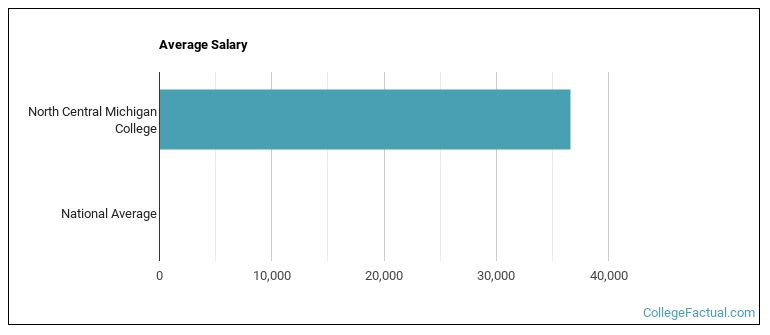 by our College Data Analytics Team
by our College Data Analytics TeamExplore the best ranked schools for the programs you are most interested in.
According to College Factual's 2025 analysis, NCMC is ranked #1,841 out of 2,152 schools in the nation that were analyzed for overall quality. This is an improvement over the previous year, when NCMC held the #1,989 spot on the Best Overall Colleges list.
NCMC also holds the #49 spot on the Best Colleges in Michigan ranking.
As long as you meet basic requirements, you should not have any trouble getting into North Central Michigan College since the school has an open admissions policy. Still, be sure to submit any requested materials and that your application is completed in full.
The student to faculty ratio at North Central Michigan College is about average at 15 to 1. This ratio is often used to gauge how many students might be in an average class and how much time professors will have to spend with their students on an individual level. The national average for this metric is 15 to 1.
Another measure that is often used to estimate how much access students will have to their professors is how many faculty members are full-time. The idea here is that part-time faculty tend to spend less time on campus, so they may not be as available to students as full-timers.
The full-time faculty percentage at North Central Michigan College is 100%. This is higher than the national average of 47%.
The freshmen retention rate is a sign of how many full-time students like a college or university well enough to come back for their sophomore year. At North Central Michigan College this rate is 53%, which is a bit lower than the national average of 68%.
During the 2017-2018 academic year, there were 1,748 undergraduates at NCMC with 629 being full-time and 1,119 being part-time.
The net price is calculated by adding tuition, room, board and other costs and subtracting financial aid.Note that the net price is typically less than the published for a school. For more information on the sticker price of NCMC, see our tuition and fees and room and board pages.
It's not uncommon for college students to take out loans to pay for school. In fact, almost 66% of students nationwide depend at least partially on loans. At NCMC, approximately 11% of students took out student loans averaging $2,200 a year. That adds up to $8,800 over four years for those students.
Get more details about paying for North Central Michigan College.

See which majors at North Central Michigan College make the most money.
Get more details about the location of North Central Michigan College.

Contact details for NCMC are given below.
| Contact Details | |
|---|---|
| Address: | 1515 Howard St, Petoskey, MI 49770 |
| Phone: | 231-348-6600 |
| Website: | www.ncmich.edu/ |
| Most Popular Majors | Bachelor’s Degrees | Average Salary of Graduates |
|---|---|---|
| Liberal Arts General Studies | 128 | NA |
| Nursing | 27 | NA |
| General Physical Sciences | 19 | NA |
| Health & Medical Administrative Services | 15 | NA |
| Business Administration & Management | 9 | NA |
| Accounting | 4 | NA |
| Business Support & Assistant Services | 3 | NA |
| Graphic Communications | 3 | NA |
| Allied Health Professions | 3 | NA |
| Data Processing | 2 | NA |
Online learning is becoming popular at even the oldest colleges and universities in the United States. Not only are online classes great for returning adults with busy schedules, they are also frequented by a growing number of traditional students.
In 2022-2023, 676 students took at least one online class at North Central Michigan College. This is a decrease from the 697 students who took online classes the previous year.
| Year | Took at Least One Online Class | Took All Classes Online |
|---|---|---|
| 2022-2023 | 676 | 274 |
| 2021-2022 | 697 | 259 |
| 2020-2021 | 840 | 324 |
| 2018-2019 | 669 | 218 |
Learn more about online learning at North Central Michigan College.
Footnotes
*The racial-ethnic minorities count is calculated by taking the total number of students and subtracting white students, international students, and students whose race/ethnicity was unknown. This number is then divided by the total number of students at the school to obtain the racial-ethnic minorities percentage.
References
More about our data sources and methodologies.